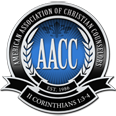Poor Communication
 Liz and Barry went on a one week trip to the Caribbean. Their much needed vacation had been in the works for some time. Both got caught up in the tourist experience for a few days, and then Liz got on him for staring at the waitress and Barry went quiet. He was sick of the accusations. He was sick of Liz and sorry he’d ever agreed to this vacation. Barry’s body language and facial expression shouted anger, but he would not say anything. He became emotionally distant from Liz. When Liz tried to talk with him, he withdrew even more. A couple of times when she was initiating a conversation, he just turned his back and walked out of their hotel room. Does this couple have issues with communication? For sure!
Liz and Barry went on a one week trip to the Caribbean. Their much needed vacation had been in the works for some time. Both got caught up in the tourist experience for a few days, and then Liz got on him for staring at the waitress and Barry went quiet. He was sick of the accusations. He was sick of Liz and sorry he’d ever agreed to this vacation. Barry’s body language and facial expression shouted anger, but he would not say anything. He became emotionally distant from Liz. When Liz tried to talk with him, he withdrew even more. A couple of times when she was initiating a conversation, he just turned his back and walked out of their hotel room. Does this couple have issues with communication? For sure!
Poor communication is one of the biggest downfalls of a failing marriage. When couples go through rough patches, their communication can also take a downward turn, creating destructive patterns that are detrimental to the relationship. John Gottman is a world renowned couple’s therapist and author. In his book, “The Seven Principles for Making Marriage Work,” he states that in any marriage, there are four key predictors of divorce - criticism, contempt, defensiveness and stonewalling. Gottman calls them the Four Horsemen of the Apocalypse, a metaphor depicting the end of times in the New Testament. These words describe war, conquest, and death. Dr. Gottman uses this metaphor to describe communication styles that can predict the end of a relationship.
In my Christian counseling practice, I assess and explore the couple’s communication style and assist them in discovering the core issues contributing to the decline in healthy interactions. These issues often have their root in matters of the heart relating to their relationship with Christ, parental communication patterns, as well as past unresolved issues. I help them discover and process their individual obstacles, making them aware of their triggers, thus enabling them to take responsibility for their own reactions and move toward more positive interactions.






